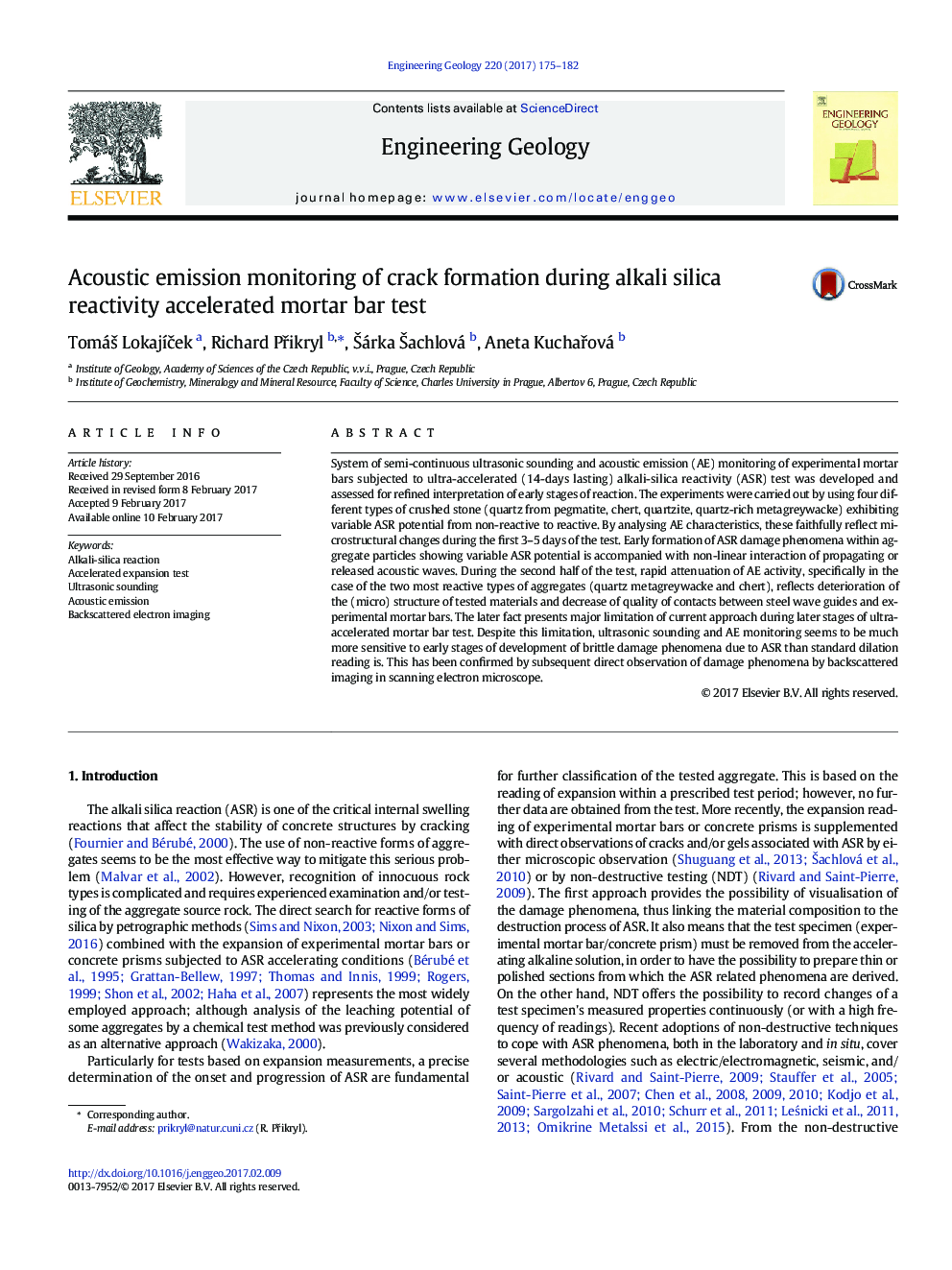| کد مقاله | کد نشریه | سال انتشار | مقاله انگلیسی | نسخه تمام متن |
|---|---|---|---|---|
| 5787599 | 1641765 | 2017 | 8 صفحه PDF | دانلود رایگان |
- Ultrasonic sounding and AE monitoring can be used as effective supplementary tools for the monitoring of ASR damage.
- Reaction products - alkali silica gels - significantly attenuate ultrasonic signals.
- Quality of AE monitoring is influenced by specimen/transducer contact.
System of semi-continuous ultrasonic sounding and acoustic emission (AE) monitoring of experimental mortar bars subjected to ultra-accelerated (14-days lasting) alkali-silica reactivity (ASR) test was developed and assessed for refined interpretation of early stages of reaction. The experiments were carried out by using four different types of crushed stone (quartz from pegmatite, chert, quartzite, quartz-rich metagreywacke) exhibiting variable ASR potential from non-reactive to reactive. By analysing AE characteristics, these faithfully reflect microstructural changes during the first 3-5Â days of the test. Early formation of ASR damage phenomena within aggregate particles showing variable ASR potential is accompanied with non-linear interaction of propagating or released acoustic waves. During the second half of the test, rapid attenuation of AE activity, specifically in the case of the two most reactive types of aggregates (quartz metagreywacke and chert), reflects deterioration of the (micro) structure of tested materials and decrease of quality of contacts between steel wave guides and experimental mortar bars. The later fact presents major limitation of current approach during later stages of ultra-accelerated mortar bar test. Despite this limitation, ultrasonic sounding and AE monitoring seems to be much more sensitive to early stages of development of brittle damage phenomena due to ASR than standard dilation reading is. This has been confirmed by subsequent direct observation of damage phenomena by backscattered imaging in scanning electron microscope.
Journal: Engineering Geology - Volume 220, 30 March 2017, Pages 175-182
